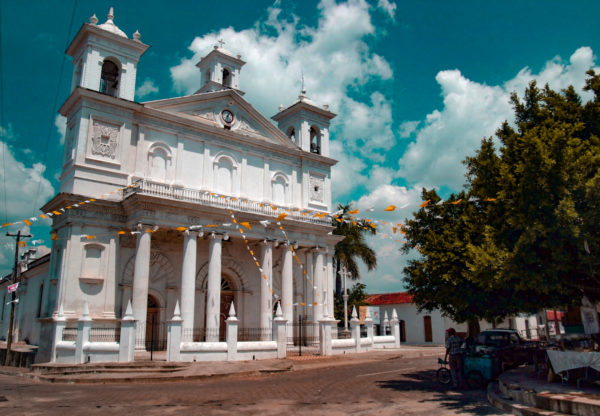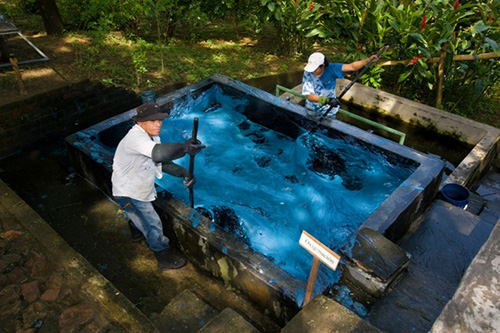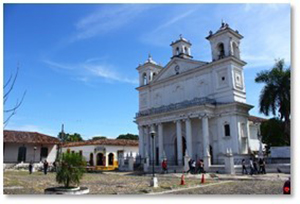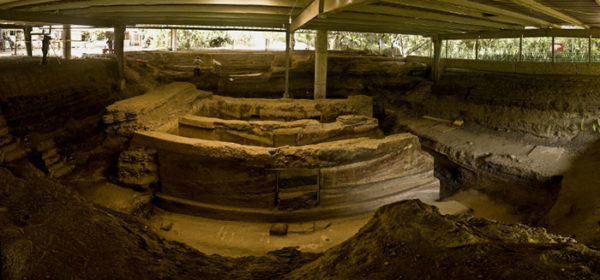Haciendas, Ancient Ruins, and Local Villages; Free Experiences in El Salvador

Yampu’s Tour Consultants are offering free tours throughout El Salvador to those who book a trip during the month of September with a departure date before March, 2020.
El Salvador is the most densely populated country in Central America with a population of over 7 million! Situated on the Pacific Coast, El Salvador is full of unique natural and cultural treasures. The coffee industry has long been the main source of income for El Salvador, although, tourism has grown considerably in the last few years, and is quickly becoming an important part of the economy. Known for its beaches, nightlife and mestizo culture, El Salvador is a beautiful country that has something for everyone.
Take a look at the complimentary experiences then get in contact with Yampu’s Travel experts to add them to your custom itinerary!
Tour of Suchitoto and Hacienda Los Nacimientos Experience
Suchitoto is about 47 km north of San Salvador, full colonial homes, buildings, and cobblestone streets. You can check out several local art galleries during our tour on foot through the town. Various locations in town have a great view over Lake Suchitlan, a former river that was dammed and has an ecosystem that offers ornithological interest for abundance as well as for the variety of species, pelicans, herons, and stork.
After a short walk through town, you will drive to Hacienda Los Nacimientos: Having a look into El Salvador’s recent past as we visit Hacienda Los Nacimientos, the location of a former guerilla camp during El Salvador’s Civil War. This war, which lasted from 1980 to 1992, pitted El Salvador’s military government against left-wing guerillas.
Today, the hacienda is the site of an organic farming initiative, dedicated to rebuilding the community by providing jobs to the war’s victims. One of the farm’s key products is indigo, a blue dye harvested from the leaves of the xiquilite plant that has been in use since the time of the ancient Maya. We will have the opportunity to observe the process of its production, including its extraction, drying, and milling.
Historic Tour of Cinquera
The Municipality of Cinquera, itself nestled in a valley, is surrounded by 14 hills that are part of a protected natural preserve, known as “The Mountain of Cinquera.” The ecological biosphere of the basin, in which lies the town of Cinquera, and the entrance to the forest preserve and classified as a ‘tropical rain forest. The Cultural Heritage of Cinquera has a strong link with the living historical memory of many residents who were involved in the armed conflict that lasted some 22 years in El Salvador from 1970 until the Peace Accords of 16 January 1992 was signed, ending the armed conflict.
During the war all the residents of Cinquera and the surroundings fled, leaving the area around it deserted. Beginning in 1992, the residents of Cinquera began to return, in order to rebuild and restore their village. The vision of Cinquera’s residents was to restore their town and to preserve the delicate ecology of the surrounding forested area. The natural preserve was developed with the assistance of international relief organizations to preserve and protect the delicate ecological balance, along with the historical monuments.
At present, the infrastructure includes the park, trails, uniformed guides and restored historical monuments, to support low-impact sustainable Eco-tourism benefiting the entire community while preserving the ambiance of the village with its important links to the Historical Memory of the Armed Conflict 1970-1992.
Exploring the Ancient Mayan site of Joya de Ceren
“Joya de Ceren”, was declared world heritage by UNESCO in 1993 for being the only location in the whole Maya culture where you can appreciate the day to day living styles of the popular pre-Columbian inhabitants. “Joya de Ceren”, was a village not a ceremonial site and was buried by several eruptions of volcanoes and the village lies under 14 layers of ash. For this reason, the village has been very well preserved.
Unlike in Pompeii, The villagers were apparently able to escape in time as no bodies have been found. The Escapes did, however, leave behind utensils, ceramics, furniture, and even half-eaten food in their haste to escape. The site is full of architectural remains, grouped into compounds that include civic, religious and household buildings. All structures are made of earth and important features like thatch roofs and artifacts found in-situ have been recovered.
The excavated structures include a large community building on the side of a plaza, two houses of habitation that were part of domiciles, three storehouses (one was in the process of being remodeled), one kitchen, and a sweat bath. On the northeast side of the plaza, there is a religious building devoted to communal festivities and one where a “Shaman” (Maya spiritual practitioner) performed. Rammed earth construction was used for the public buildings and the sauna, and wattle and daub (which is highly earthquake resistant) for household structures.
Looking for more travel tips, tricks, and deals? Join our newsletter!
*Offers only available for new bookings made between September 1st and September 30th, 2019 with El Salvador included within the final, personalized itinerary. Departure date must be by March 1st, 2020. Complimentary service options are based on travelers’ itinerary, interests, and availability. Cannot be combined with any other offers. Cannot be applied after booking. Blackout dates apply. Please ask a Yampu Travel Expert for more information.
Tags:



